Log in or create new account to save this product to your wishlist.
Watering Your Garden: 10 Top Tips!
We all know that we need to water our gardens. But how much is too much? And how do you save water for an all-round greener garden?
We all know that we need to water our gardens. But how much is too much? And how much is too little?
When is the best time to water? How much water do your plants need? And how often should you water your lawn? It’s all questions, questions, questions, isn’t it!
Luckily, this blog provides the answers to everything you’ll ever need to know about watering your plants. And if you still have a burning question at the end, just get in touch, and we’ll be happy to help.
Because, just like humans, plants need nourishment from the sky and the ground to survive and thrive.
Here are our ten expert watering tips for a beautiful garden.
Tip 1: Identify your soil type
First things first: your soil. Do you understand the water retention properties of the earth in your garden?
Don’t worry – you don’t need a degree in agriculture to identify your soil type – you just need a handful of soil to squeeze.
Yes: squeeze. Water it first, then grab a handful, and squeeze.
Once you’ve squeezed a handful of soil in the palm of your hand, you’ll know (in no uncertain terms) what type of soil you have:
- if the soil clumps firmly together in a lump, you have a heavy clay soil
- if the earth falls apart and holds little form, you have a light, sandy soil
Heavy clay soil retains water well (but can quickly become waterlogged). Sandy soil retains moisture poorly (and dries out much more rapidly than clay).
If you have sandy soil, you’ll need to water more regularly. If you have clay soil, you should leave it longer between watering.
For more details about soil conditions, check out our article: How To Improve Your Lawn in a Shaded Garden.
Tip 2: Develop a sprinkling strategy
You can water your garden by hand, of course. It can be calming and satisfying to sprinkle water using a can, but it’s also time-consuming if you have a large garden. And if you’re watering your lawn, it takes forever with a can.
The most time-effective method of watering, by far, is using a sprinkler or soaker hose system (see Tip 8)..
But before you just set your sprinkler to sprinkle every day, there are some things to consider.
In the wild, very few British plants can expect water every day. Sure, we all moan about the British weather and complain that it rains too much – but, on average, it rains 1-in-3 days in the UK.
If you water your plants every day, their root systems become lazy. Plants are only as healthy as their roots – overwatering encourages roots to spread little and remain shallow in the soil. We want our roots deep into the ground, helping the plant develop greater drought resistance, while absorbing the nutrients to be found in the deeper earth.
So, develop a watering strategy. For a lawn:
Check the weather forecast and make sure there’s no rain ahead.
Water once or twice a week – about 2.5 cm of water, causing the water to penetrate more deeply into the soil. This will make the roots search deeper for water.
Deeper roots keep your lawn greener for longer, even during drought and when hose pipes are banned!
Tip 3: water in the morning
Believe it or not, the time of day you choose to water is significant.
The best time to water is in the morning – but this advice comes with caveats: you don’t want the leaves of whichever plant you are watering to be wet while the sun is at its hottest because it will scorch the leaves.
So, early morning is best when the sun is still low in the sky.
As well as scorching the leaves, full sun will cause the surface water to evaporate (see Tip 8).
If you leave watering until the evening, there’s a higher chance that you’ll encourage mould and vermin – the surface of the soil remains wet and cold all night, and this is the perfect environment for mould.
Saving tip 4: Save rainwater
We might think that running the tap is free, but you’ll quickly discover how expensive it can be to water your plants if you’re on a water meter.
Rainwater, on the other hand, IS free and usually in reasonably plentiful supply in the UK.
Rainwater is rich in minerals and doesn’t contain lime (like tap water), making the water quality soft and perfect for your plants. Additionally, the temperature of rainwater is less likely to shock your plants (it’s more likely to be closer to the air temperature).
Saving tip 5: Collect water in a water butt
We tend to think of drought as the product of a long, hot summer, but drought can occur at any time of year. A drought is a period of unusually low rainfall, but it can also be caused by heavy demand for water supplies.
So, wherever possible, it’s always best to collect rainfall in a water butt. There’s a range of styles and sizes of rainwater harvesting systems, but the simplest are really affordable.
Just think of the savings against your water bill.
Simply attach your water butt to a downspout from your roof guttering, and it will collect rainfall for later use. Keep a lid on the butt to keep the water clean.
Find out everything you need to know about collecting rainwater here.
Saving tip 6: Design your garden smartly
Believe it or not, but the placement of your plants affects how much you need to water them. You can save water by considering how much direct sunlight your garden receives.
Most gardens have sunny spots as well as shaded areas covered by overhanging trees or walls. Some plants are more naturally drought-tolerant than others – arrange your plants by the amount of water they need. Shrubs and bushes tend to be more drought-tolerant than smaller, single-stemmed plants.
So:
Place your drought-tolerant plants in the areas that get the most sunlight and your more thirsty plants in the less sunny spots.
Of course, most plants need lots of sun to thrive, so always read the plant’s label when you buy it from a garden centre (or the seed packet if you’re growing from seed)..
Saving tip 7: Mulch – covering your soil
Mulching helps save water by minimising evaporation and suppressing moisture-stealing weeds. Mulch also improves the appearance of the soil around your plants.
A good layer of well-rotted mulch helps warm up the earth in the spring, retain moisture during the summer, and encourage greater water penetration in the winter.
You can cover your ground with biodegradable mulch, such as garden compost, leaf mould, well-rotted manure, straw, or wood chippings. These organic mulches contribute nutrients to the soil, but they’ll need regular topping up.
Non-biodegradable soil coverings such as slate, pebbles, gravel, or stone chippings can be a better longer-term mulch, but they don’t break down and provide nutrients. Any dark-coloured mulch will warm the soil up in the sun, whereas lighter-coloured mulch keeps the ground cool.
Alternatively, you can choose a sheet (or woven) mulch for longer-term coverage.
Saving tip 8: Use a Drip
A soaker (or drip) hose is a porous hosepipe, designed to leak. It ensures that whatever water you provide gets to the plant’s roots.
One of the problems with watering from a can (or a traditional hosepipe) is that the water doesn’t always penetrate deeply into the soil before the sun evaporates it. And some plants (like courgettes) dislike getting their leaves wet, so a soaker hose is an ideal solution and uses 70% less water than traditional watering, providing continuous watering at a slow dripping rate.
Connect your soaker hose to the garden tap or your water butt.
Keep the water pressure low (use a regulator if you’re unsure).
Make sure the water butt is suitably elevated so that there’s enough water pressure!
A drip hose prevents overwatering and makes excellent use of your water butt.
Summer tip 9: Prevent Legionella
Always drain residual water from your garden hose, especially during the summer months.
If you leave your garden hose in full sun, the water that sits in the pipe heats up, creating the perfect environment for the Legionella bacteria to develop.
You probably know that Legionella (more commonly known as Legionnaires Disease) is a potentially life-threatening respiratory condition – effectively a severe form of pneumonia. If the water sitting in your hose is contaminated, you can inhale some of that bacteria while you spray.
Err on the side of caution: rinse your hose before use.
Remove the nozzle and hang the end into a bucket filled with water.
Leave the tap running for a couple of minutes with the end of the hose submerged in the bucket to prevent spray.
Winter tip 10: drain your garden hose
You probably don’t use your hose during the winter months (unless you’re washing the car), so ensure that you drain it thoroughly before putting it away for the winter.
Any water that remains in the hose can freeze when the temperatures plummet.
We’ve probably all left a bottle of wine in the freezer before (or is that just me?). If you forget about it and the wine freezes completely, the liquid expands as it freezes and breaks the bottle. This can happen with your hosepipe.
So, drain your hose entirely so that you’re not rushing off to the DIY store in the spring.
Leave some comments!
There you are! 10 Tips on watering your garden.
Do you have more water tips? Leave them in the comments.
Thanks for reading. Happy watering, everyone.
Leave a comment
Your answer will be displayed on the site and the interested party will be notified by email.
Leave a comment
Have a question or want to share your experience? Leave us a comment.
Read more
The best tips and tricks for a lush green lawn
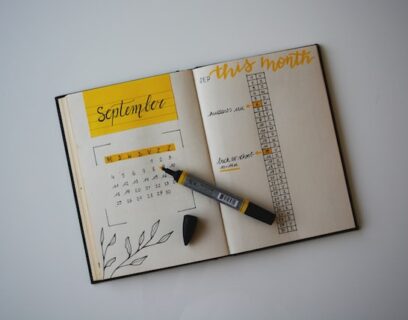 4 MIN
03 Sep
Gardening in September — jobs to do
4 MIN
03 Sep
Gardening in September — jobs to do
 7 MIN
23 Aug
How to Encourage Bees in Your Garden
7 MIN
23 Aug
How to Encourage Bees in Your Garden
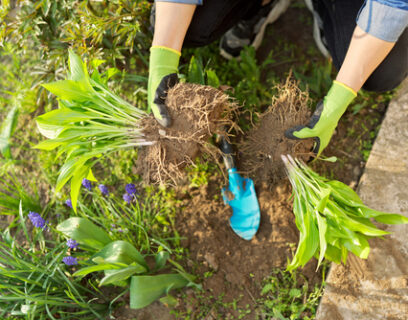 5 MIN
09 Aug
4 Tips for more Ergonomic Gardening!
5 MIN
09 Aug
4 Tips for more Ergonomic Gardening!
 Scarifying Kit
All products after scarifying | Quickly restores the lawn after scarifying | Outsmart weeds quickly with the use of this kit
From: € 39.99
Scarifying Kit
All products after scarifying | Quickly restores the lawn after scarifying | Outsmart weeds quickly with the use of this kit
From: € 39.99
 Spring Lawn Care Kit
MOOWY’s choice for the spring | Quick recovery of your lawn after winter | A strong lawn prevents weeds
From: € 25.99
Spring Lawn Care Kit
MOOWY’s choice for the spring | Quick recovery of your lawn after winter | A strong lawn prevents weeds
From: € 25.99
 Long Lasting Lawn Fertiliser
Effective for 90 days | See results in 14 days! | Suitable for all types of grass and soil
From: € 13.99
Long Lasting Lawn Fertiliser
Effective for 90 days | See results in 14 days! | Suitable for all types of grass and soil
From: € 13.99
Do you want a lawn calendar?
🌱 All important maintenance moments for your lawn during the year. Leave your email and we will send you the lawn calendar for free.
Enter your email
Receive the lawn calendar in the mail
Enjoy a green lawn all year round!



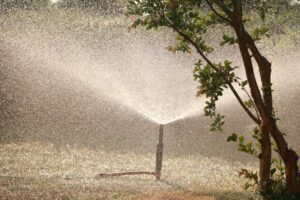
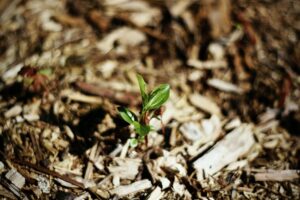
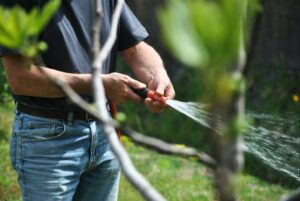







Comments (0)
There are no comments yet. Well then, what are you waiting for to
Be the first to write your comment!inaugurate this pretty page?
Do you have some comments?